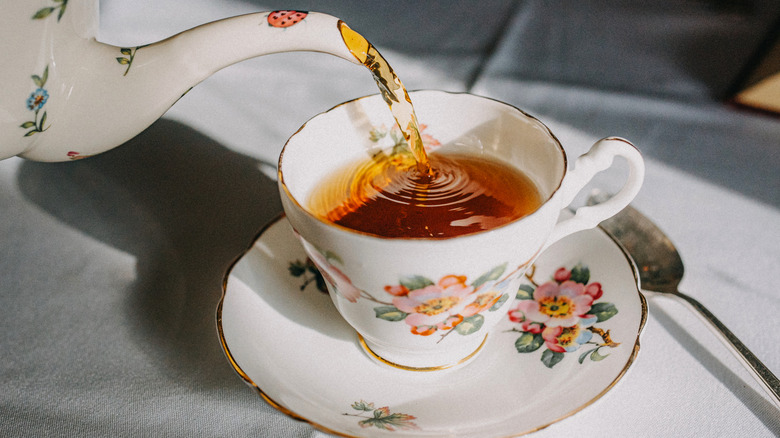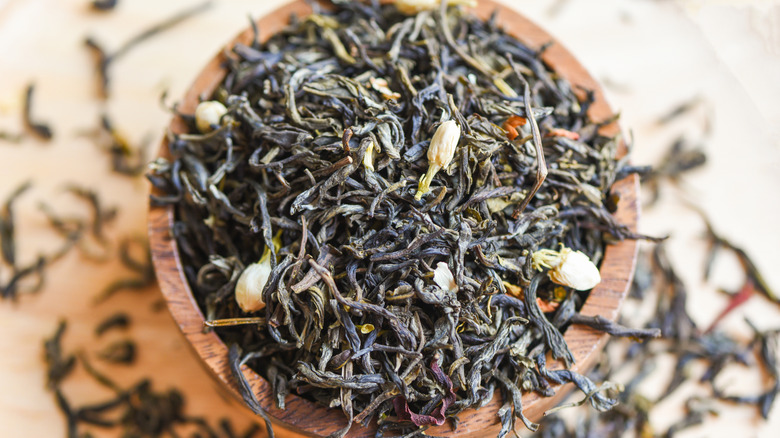Is Earl Grey Just Black Tea?
Earl Grey is a quintessentially British tea blend, renowned by enthusiasts for its malty base well-balanced against floral top notes of aromatic citrus. Earl Grey is, technically speaking, a black tea, but it is not categorized as such. That's because the tea base has been flavored with bergamot oil — which is what gives Earl Grey its famed fruity, floral taste. So, is Earl Grey just black tea? Well, yes and no. But as far as the tea community is concerned, most lean towards the latter: It's not just black tea, it's flavored.
Flavored teas are made by infusing dried tea leaves with natural or artificial flavors. You might not immediately think that you'd be familiar with flavored teas, but you'd be surprised — just look at jasmine tea, a green tea made with fresh jasmine flowers, or chai, which is black tea paired with aromatic Indian spices. In the case of Earl Grey, the black tea base is infused with bergamot oil. The infusion process involves spraying or coating the tea with the oil, and in some cases, dried bergamot rinds are mixed with the black tea. This is what gives Earl Grey its signature citrusy twist. You can serve this tea black or with milk and sugar, but some people just add in a lemon twist to let the citrus flavors shine. Budding at-home baristas could have a go at steaming their milk to make the Earl Grey-based London fog latte.
What is the history of Earl Grey tea?
The history of Earl Grey is steeped in its own mythology. Although it's a crucial part of the British tea-drinking tradition, some stories trace this tea's origins to early Chinese tea masters who developed the practice of flavoring tea with various aromatics to improve its flavor and value.
According to the aristocratic Grey family, this tea was named after their ancestor — the conveniently titled Earl of Grey, former prime minister of the United Kingdom from 1830 to 1834. The legend goes that Grey was bestowed this bergamot-flavored black tea by a visiting Chinese tea master who wanted to balance the lime taste in the historical Grey estate's waters. The tea was so beloved by Grey's wife that she introduced it to London's high society. Eventually, it found popularity across Britain, and Earl Grey solidified itself as a staple of the Great British tea institution.
Other legends state that Earl Grey was introduced to Britain as a gift from a Chinese tea maker whose son was saved from drowning by one of the Earl's men. Today, this story is pretty much universally disputed. But what these tales really show is that no matter what the origins of Earl Grey are, this special blend has placed its mark on the heart and soul of British tea culture. Dive even deeper into tea culture by learning how to differentiate black, green, pu'erh, and oolong.


